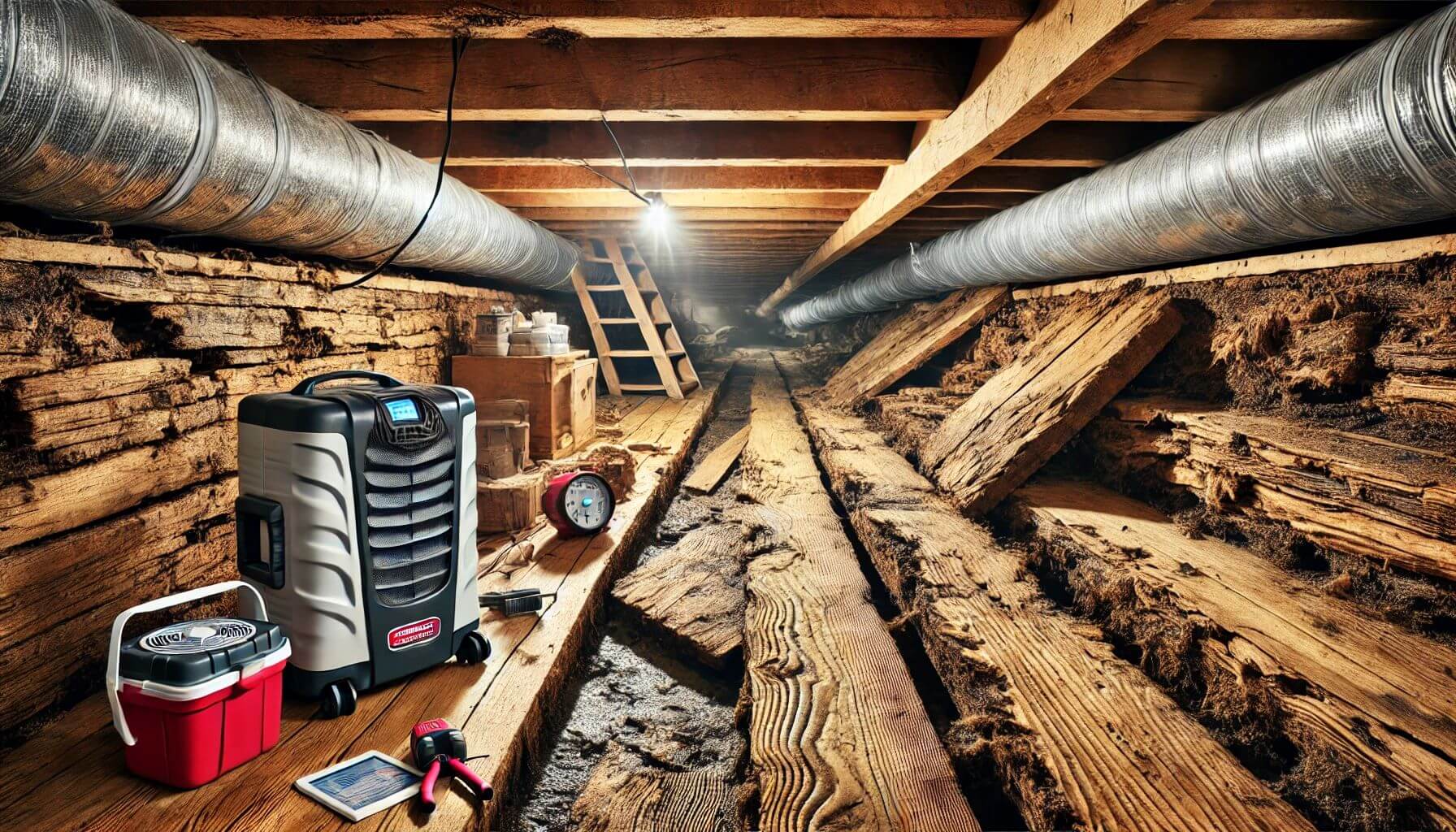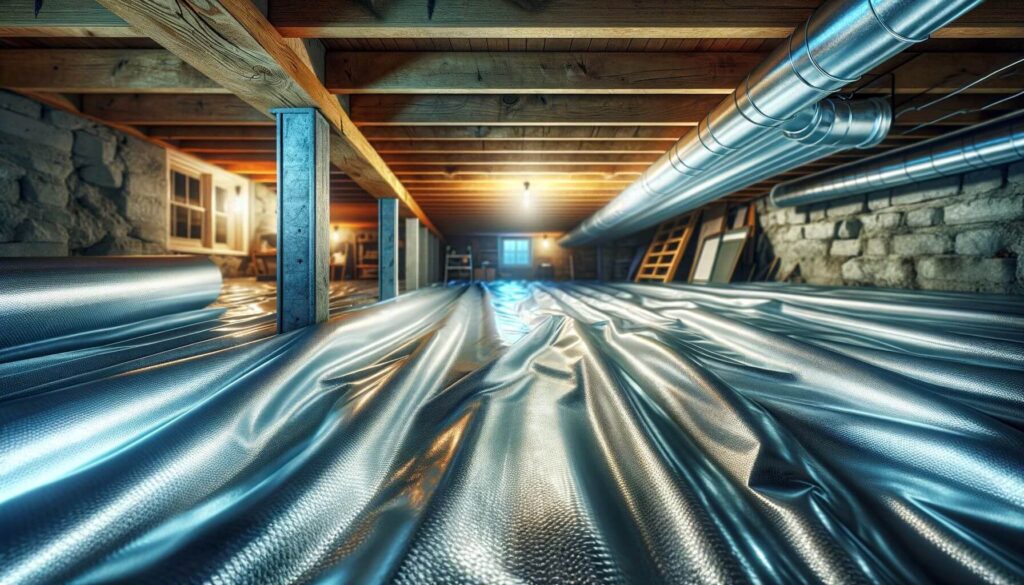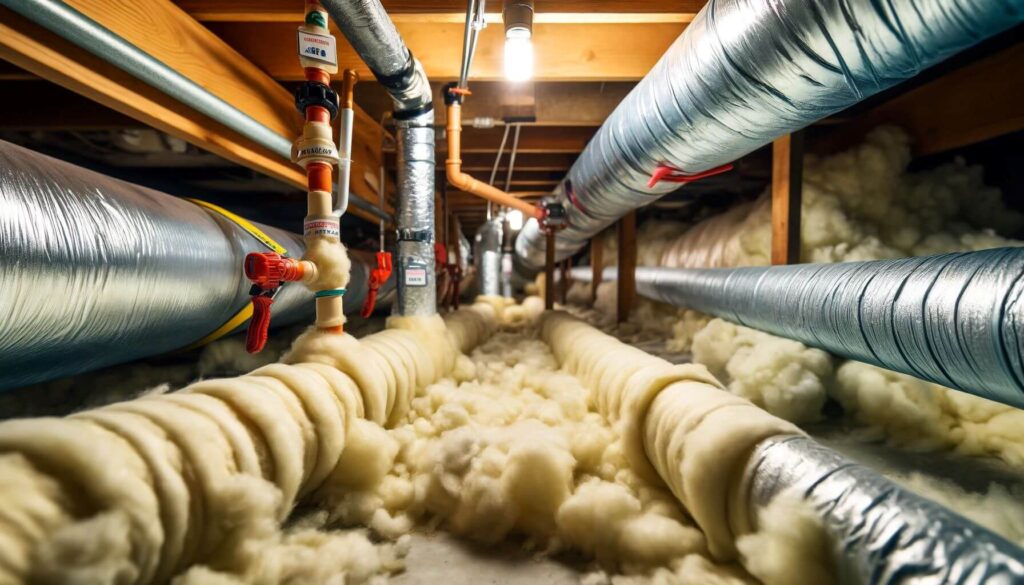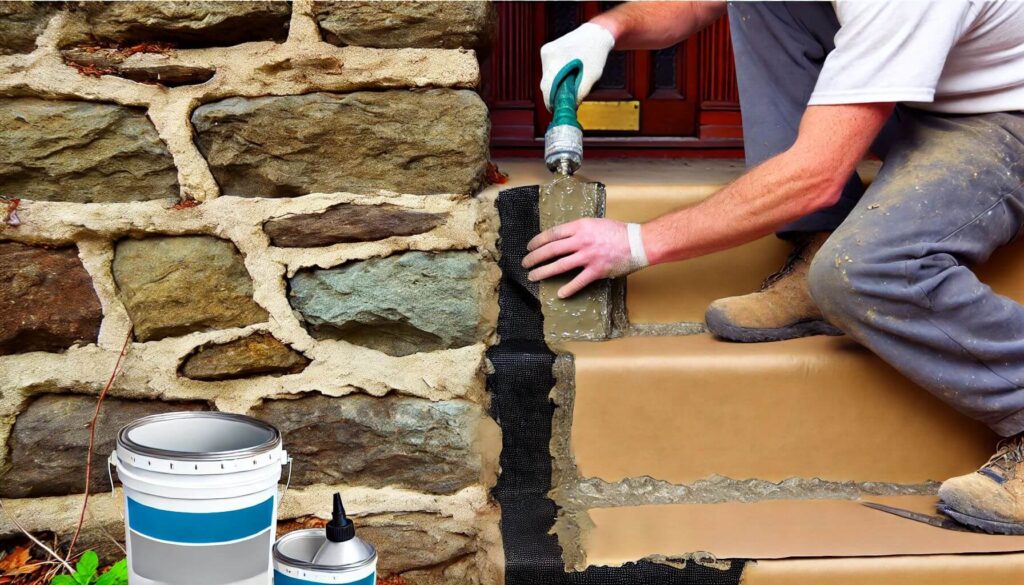
Moisture issues in crawlspaces can lead to significant problems for homeowners, including warping and cupping of wooden structures. These issues not only affect the aesthetic appeal of your home but can also compromise its structural integrity. In this article, we’ll explore effective strategies to manage moisture in your crawlspace, preventing warping and cupping, and ensuring the longevity of your home’s foundation.
Understanding the problem
Before we dive into solutions, it’s crucial to understand why moisture control in crawlspaces is so important. Crawlspaces are often overlooked areas of a home, but they play a vital role in its overall health. Excess moisture in these spaces can lead to a host of issues, including mold growth, wood rot, and structural damage.
Warping and cupping are two common problems that occur when wood is exposed to excessive moisture. Warping refers to the bending or twisting of wood, while cupping is a type of warping where the edges of a board curve upward, creating a concave surface. Both of these issues can affect flooring, support beams, and other wooden elements in your home.
To truly grasp the importance of crawlspace maintenance, consider reading our article on 5 reasons why your foundation is the most important part of your home. This will give you a broader perspective on how crawlspace issues can impact your entire house.
Identifying moisture sources
The first step in managing moisture in your crawlspace is identifying where it’s coming from. Common sources include:
- Groundwater seepage
- Plumbing leaks
- Poor drainage around the foundation
- Humid air entering through vents
Once you’ve identified the source, you can take targeted action to address it. For instance, if you’re dealing with groundwater issues, you might need to consider French drain basement waterproofing. This system can effectively divert water away from your foundation, preventing it from entering your crawlspace.
Installing a vapor barrier

One of the most effective ways to control moisture in a crawlspace is by installing a vapor barrier. This is typically a heavy-duty plastic sheet that covers the entire floor of the crawlspace, preventing moisture from the ground from entering the space.
When installing a vapor barrier, it’s crucial to ensure complete coverage and proper sealing. Any gaps or tears can allow moisture to penetrate, defeating the purpose of the barrier. For more detailed information on this topic, check out our guide on crawl space vapor barrier.
Improving ventilation vs Warping and Cupping
Proper ventilation is key to managing moisture levels in your crawlspace. However, the approach to ventilation has evolved over the years. While older homes often have vented crawlspaces, modern building science suggests that a sealed, conditioned crawlspace may be more effective in controlling moisture.
If you decide to seal your crawlspace, you’ll need to ensure it’s properly insulated and that any existing vents are sealed. This approach can help maintain a more consistent temperature and humidity level in the crawlspace, reducing the risk of moisture-related issues.
Installing a dehumidifier
In some cases, especially in humid climates, a vapor barrier and proper ventilation may not be enough to control moisture. In these situations, installing a dehumidifier in your crawlspace can be an effective solution.
A dehumidifier works by removing excess moisture from the air, helping to maintain optimal humidity levels. When choosing a dehumidifier for your crawlspace, look for one that’s designed specifically for this purpose, with features like automatic drainage and humidity controls.
Addressing drainage issues
Poor drainage around your home’s foundation can lead to water accumulation in your crawlspace. To prevent this, ensure that your gutters and downspouts are functioning properly and directing water away from your foundation.
You might also need to grade the soil around your home to slope away from the foundation. For more extensive drainage solutions, consider exploring our article on driveway drainage solutions. While focused on driveways, many of these principles can be applied to general foundation drainage as well.
Regular inspections and maintenance
Preventing moisture issues in your crawlspace requires ongoing vigilance. Regular inspections can help you catch potential problems early, before they lead to significant damage. Look for signs of water intrusion, mold growth, or pest infestations during these inspections.
Additionally, perform routine maintenance tasks such as cleaning gutters, checking for plumbing leaks, and ensuring your vapor barrier remains intact. For a comprehensive approach to home maintenance, including crawlspace care, check out our guide on 6 ways to improve the structural integrity of your home.
Professional waterproofing

In some cases, DIY solutions may not be enough to fully address moisture issues in your crawlspace. Professional waterproofing services can provide more comprehensive solutions, including the installation of interior drainage systems, sump pumps, and specialized waterproof coatings.
If you’re considering professional waterproofing, our article on basement waterproofing erie pa offers insights into what these services might entail, even if you’re not in Erie, PA.
Addressing existing damage
If your crawlspace has already suffered from moisture damage, it’s crucial to address this before implementing moisture control measures. This might involve replacing damaged wood, treating for mold, or even structural repairs.
For issues related to wood rot, our guide on plywood rot repair lake stevens wa provides valuable information, even if you’re not in Lake Stevens, WA. The principles of wood repair and replacement are generally applicable across different locations.
Monitoring humidity levels
To effectively manage moisture in your crawlspace, it’s important to monitor humidity levels regularly. Ideally, relative humidity in a crawlspace should be kept below 60% to prevent mold growth and wood damage.
Consider installing a hygrometer in your crawlspace to keep track of humidity levels. Some modern dehumidifiers come with built-in hygrometers and can automatically adjust their operation based on the current humidity level.
Insulating pipes and ducts

If your crawlspace contains water pipes or HVAC ducts, proper insulation is crucial. Uninsulated pipes can lead to condensation, adding unnecessary moisture to your crawlspace. Meanwhile, insulated ducts can help maintain a more consistent temperature in the space, reducing the risk of condensation.
When insulating pipes and ducts, be sure to use materials rated for use in crawlspaces. These should be moisture-resistant and, ideally, treated to resist mold and mildew growth.
Managing landscaping for warping and cupping
Your home’s landscaping can have a significant impact on crawlspace moisture levels. Trees and shrubs planted too close to your foundation can create shade and trap moisture. Additionally, their roots can sometimes interfere with drainage systems or even create cracks in your foundation.
When planning your landscaping, consider how it might affect your home’s foundation and crawlspace. For ideas on how to balance aesthetics with practicality, check out our article on stunning driveway landscaping ideas. Many of these concepts can be applied to general foundation landscaping as well.
Sealing foundation cracks

Even small cracks in your foundation can allow moisture to seep into your crawlspace. Regularly inspect your foundation for cracks and seal them promptly. For minor cracks, a masonry caulk or hydraulic cement can often do the job. However, larger or recurring cracks may indicate more serious structural issues that require professional attention.
For more information on foundation repair, our article on foundation repair colorado springs co provides valuable insights, regardless of your location.
Proper grading
Ensuring that the ground around your home slopes away from the foundation is crucial for preventing water from pooling around and potentially entering your crawlspace. The general rule of thumb is to have a slope of at least 6 inches over a distance of 10 feet from your foundation.
If your property doesn’t naturally have this slope, you may need to add soil to create it. Be cautious not to raise the soil level above your home’s damp proof course, as this can lead to other moisture issues.
Managing indoor humidity
While it might seem counterintuitive, managing the humidity levels inside your home can also affect your crawlspace. Excessively humid air from your living spaces can make its way into the crawlspace, contributing to moisture issues.
Use exhaust fans in bathrooms and kitchens, and consider using a dehumidifier in particularly humid areas of your home. For more ideas on managing indoor air quality, which can indirectly affect your crawlspace, check out our article on air duct cleaning services easton pa.
Crawlspace encapsulation

For a comprehensive solution to crawlspace moisture issues, consider crawlspace encapsulation. This process involves completely sealing off the crawlspace from the outside environment, including installing a heavy-duty vapor barrier, sealing vents and gaps, insulating walls, and often installing a dehumidifier.
Encapsulation can significantly reduce moisture levels in your crawlspace, improve indoor air quality, and even increase energy efficiency. However, it’s a complex process that’s usually best left to professionals.
Regular cleaning
Keeping your crawlspace clean can go a long way in preventing moisture issues. Debris, organic matter, and standing water can all contribute to increased humidity and provide breeding grounds for mold and pests.
Regularly remove any debris from your crawlspace and address any standing water immediately. If you’re uncomfortable entering your crawlspace or if you suspect mold or pest issues, it’s best to hire a professional for cleaning and inspection.
Understanding local building codes
When implementing moisture control measures in your crawlspace, it’s important to be aware of local building codes and regulations. Some areas have specific requirements for crawlspace ventilation, vapor barriers, or encapsulation.
Before undertaking any major crawlspace renovations, check with your local building department to ensure your plans comply with current codes. This can save you time and money in the long run and ensure your home remains up to code.
Moisture Control is Crucial
Managing moisture in your crawlspace is crucial for preventing warping, cupping, and other moisture-related issues in your home. By implementing a combination of the strategies discussed in this article, you can create a drier, healthier environment in your crawlspace, protecting your home’s structural integrity and improving overall indoor air quality.
Remember, while many of these tasks can be DIY projects, some may require professional expertise. Don’t hesitate to consult with a professional if you’re unsure about any aspect of crawlspace moisture management. Your home is a significant investment, and protecting its foundation is key to maintaining its value and ensuring your family’s comfort and safety for years to come.



